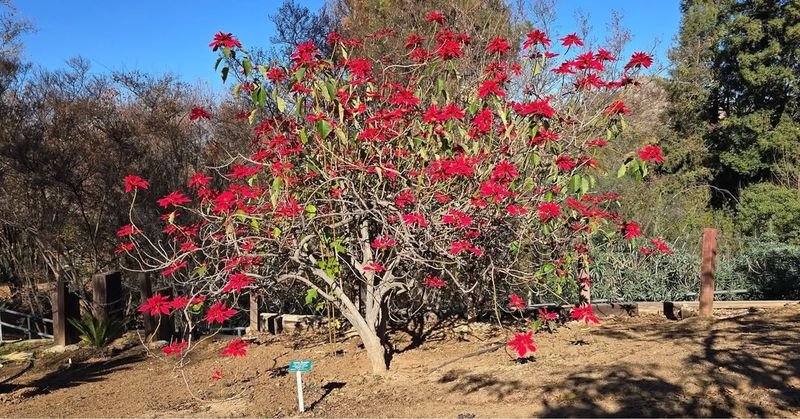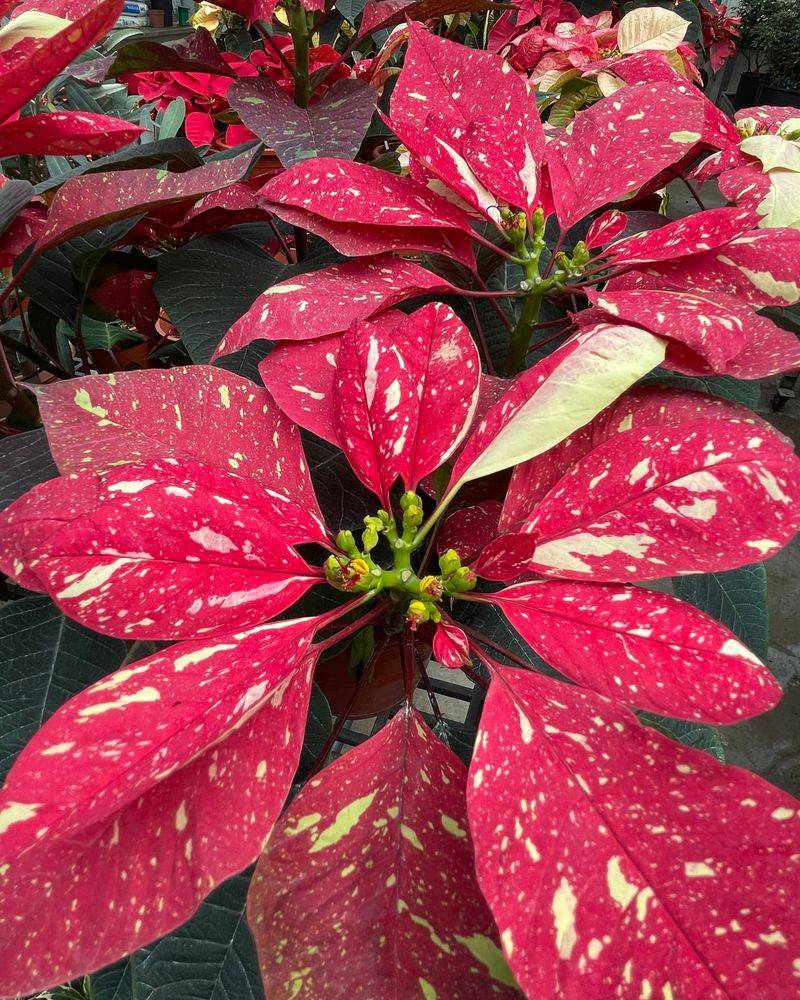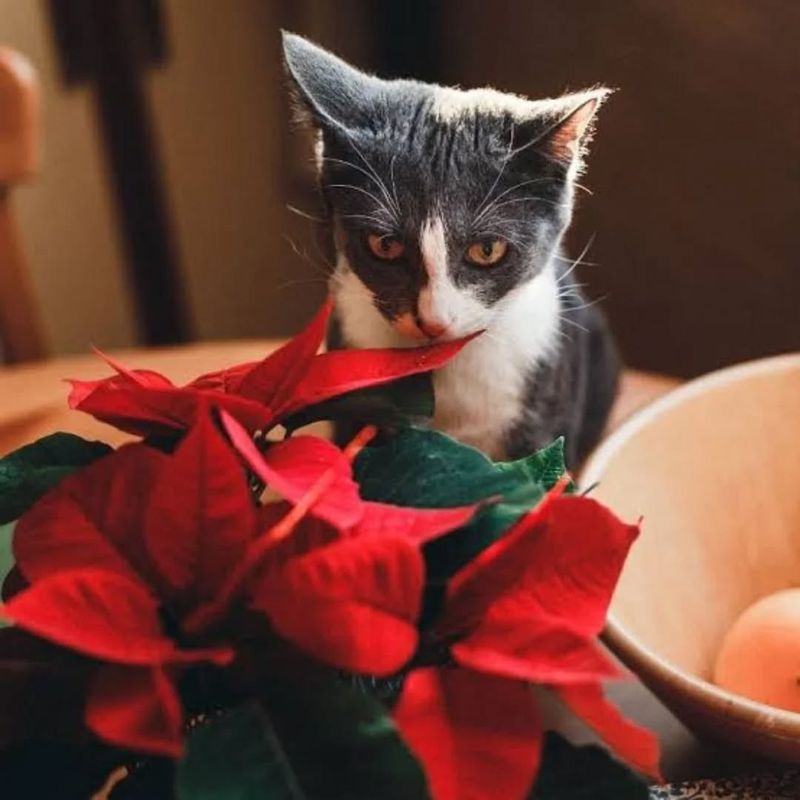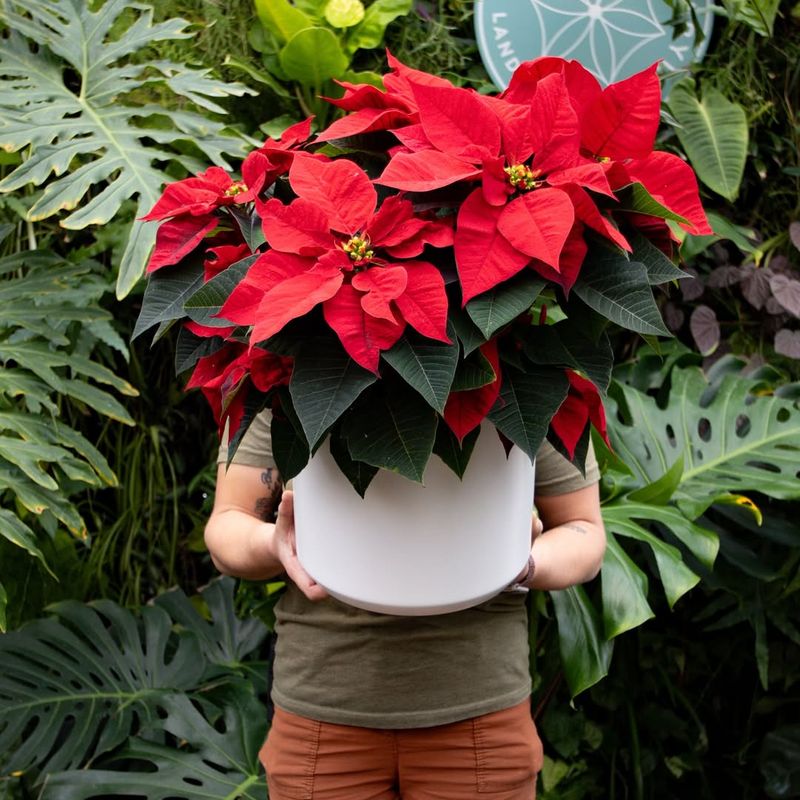Every December, New York homes light up with red and green poinsettias sitting on windowsills and dining tables.
This popular holiday plant has become a symbol of the winter season, but most people know very little about where it comes from or how to care for it.
Poinsettias have fascinating stories and surprising secrets that make them much more interesting than just pretty decorations.
Poinsettias Originally Come From Mexico
Long before poinsettias decorated New York apartments, they grew wild in the warm forests of southern Mexico. The Aztecs called this plant cuetlaxochitl and used it to make red dye and medicine for fevers.
A man named Joel Roberts Poinsett brought the plant to America in the 1820s after serving as the first U.S. ambassador to Mexico.
The flower was renamed after him, and today we celebrate National Poinsettia Day on December 12th.
The Red Parts Are Not Actually Flowers
What most people think are bright red petals are actually special leaves called bracts. The real flowers are the tiny yellow buds clustered in the center of those colorful leaves.
Bracts change color to attract pollinators in nature, acting like neon signs for butterflies and birds. Poinsettias can have bracts in red, pink, white, or even marbled patterns.
Understanding this helps you appreciate why the plant needs specific care to maintain its holiday colors throughout the season.
They Need Specific Light Conditions To Turn Red
Poinsettias turn their signature red color through a process triggered by darkness, not just cold weather. The plant needs about 12-14 hours of complete darkness each night for roughly 6-8 weeks before the holidays.
Even a small amount of light from street lamps or indoor lights can interrupt this process.
Many New York gardeners start preparing their poinsettias in October by covering them with boxes or moving them to dark closets each evening to guarantee those festive colors appear right on schedule.
Poinsettias Are Not Poisonous To Humans Or Pets
Despite popular myths, poinsettias are not poisonous. A study by Ohio State University found that a 50-pound child would need to eat over 500 leaves to experience any harmful effects.
The milky sap might cause mild stomach upset or skin irritation in some people and pets, but serious poisoning is extremely rare. Still, it makes sense to keep curious cats and dogs from chewing on any houseplant.
This misunderstanding probably started decades ago from unconfirmed stories that spread without scientific evidence.
Proper Watering Keeps Them Alive Longer
Overwatering destroys more poinsettias than anything else during the holiday season. The soil should feel slightly dry before you water again, and the pot must have drainage holes to prevent root rot.
New York apartments can be especially tricky because radiator heat dries out plants faster than expected.
Check your poinsettia every few days by sticking your finger one inch into the soil. If it feels damp, wait another day or two before adding water to avoid drowning the roots.
You Can Keep Them Blooming Year After Year
Most people toss their poinsettias after January, but with patience, you can make them bloom again next December. After the holidays, gradually reduce watering and let the plant rest in a cool spot until spring arrives.
Cut it back in April, repot it with fresh soil, and move it outdoors when temperatures stay above 50 degrees. Bring it inside before fall, then start the darkness routine again in October.
Many dedicated New York gardeners keep the same poinsettia thriving for years.







